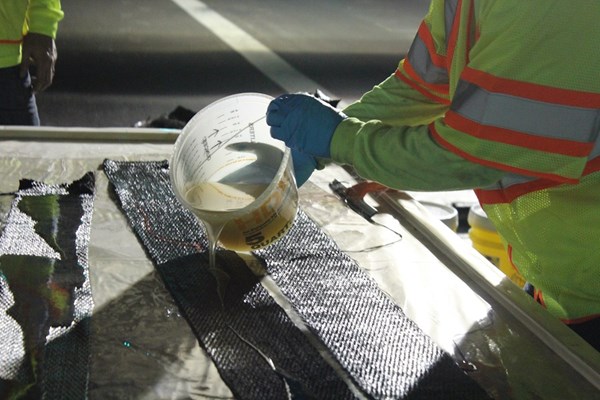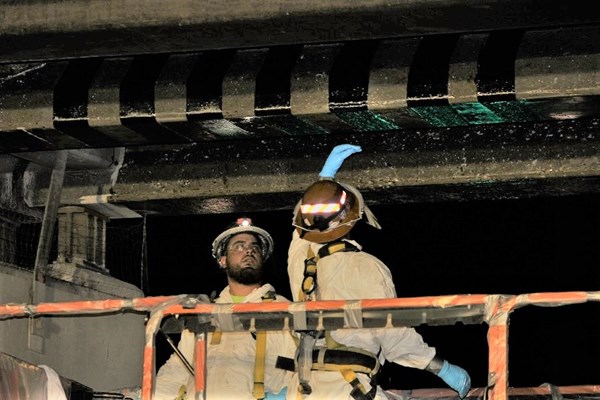Carbon fiber used to repair and strengthen Phoenix freeway bridges
FNF Construction Inc., of Tempe, Ariz. and FRP Construction of Tucson, were contractors on the I-17 bridge repairs, using a carbon fiber process for structural strengthening developed by a Tucson company, QuakeWrap Inc.
Saw a story on my local news that involved composites: The Arizona Department of Transportation (ADOT) said that it has used carbon fiber to help repair and strengthen girders on two Interstate 17 bridges in Phoenix. This marks the first time ADOT has used carbon fiber strips that are coated and strengthened with a reinforcing polymer to fix girders on state highway bridges, which in these two cases had been struck by over-height vehicles.
ADOT said that instead of other repair methods such as injecting epoxy to rebuild sections of the steel-reinforced concrete girders, crews used fiber-reinforced polymer to wrap the damaged girders. The repair work on the two I-17 bridges was completed in May.

The improvements were first done to the bridge carrying I-17 over 19th Avenue. That bridge’s sufficiency rating has now been upgraded, allowing ADOT to move it off the structurally deficit list.
The second repaired bridge, which carries Jefferson Street over I-17, wasn’t structurally deficient. Structurally deficient is kind of an alarming term, but ADOT says it doesn’t mean a bridge is unsafe to use but rather certain repair needs, including component replacement, have been identified through an inspection.
FNF Construction Inc., of Tempe, Ariz. and FRP Construction of Tucson, were contractors on the I-17 bridge repairs, using a carbon fiber process for structural strengthening developed by a Tucson company, QuakeWrap Inc.

“Our ADOT Bridge Group focuses on using new and innovative bridge-repair technologies that enhance safety while saving time and taxpayer dollars,” says ADOT Senior Bridge Engineer William Downes. “The reinforced fiber strips add strength to the girders and are designed to limit the amount of debris that could fall should a girder be struck again.”
“We think the carbon fiber repairs are effective, can extend the lifespan of structures and can be done in much less time than other repair methods,” says ADOT State Bridge Engineer David Eberhart. “We’re likely to use it again if and when repairs are needed.”
Related Content
-
Novel dry tape for liquid molded composites
MTorres seeks to enable next-gen aircraft and open new markets for composites with low-cost, high-permeability tapes and versatile, high-speed production lines.
-
Materials & Processes: Fibers for composites
The structural properties of composite materials are derived primarily from the fiber reinforcement. Fiber types, their manufacture, their uses and the end-market applications in which they find most use are described.
-
Plant tour: Joby Aviation, Marina, Calif., U.S.
As the advanced air mobility market begins to take shape, market leader Joby Aviation works to industrialize composites manufacturing for its first-generation, composites-intensive, all-electric air taxi.
















